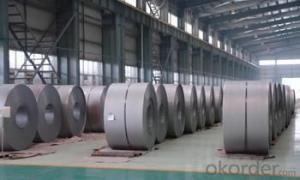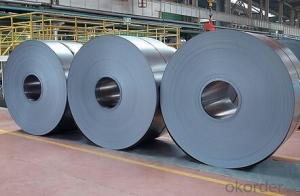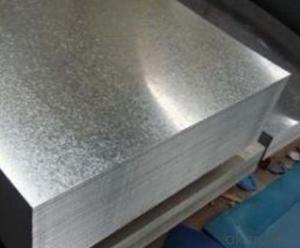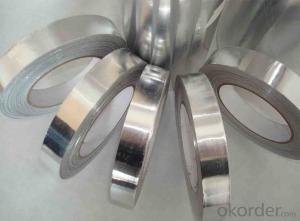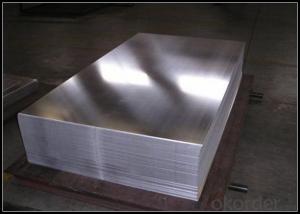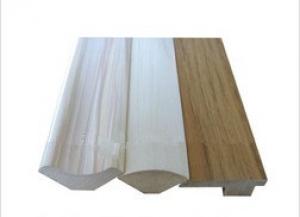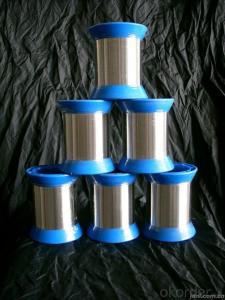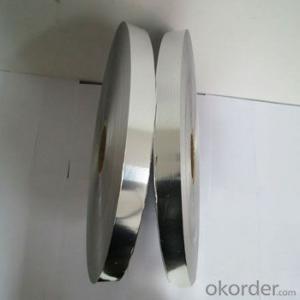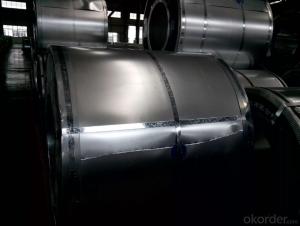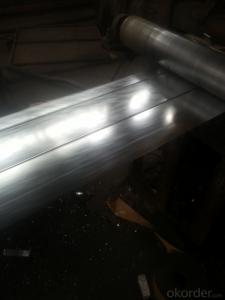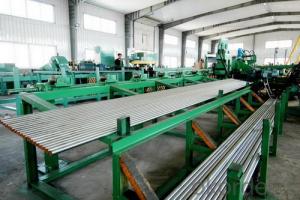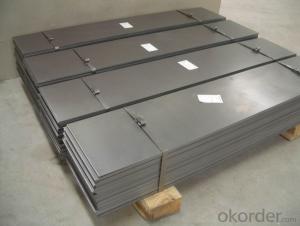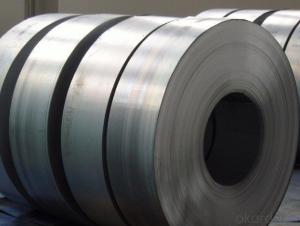Hot Rolled Steel Strip Electrical Appliance Bridge Pipeline Automobile
- Loading Port:
- China main port
- Payment Terms:
- TT OR LC
- Min Order Qty:
- 1000 m.t.
- Supply Capability:
- 10000 m.t./month
OKorder Service Pledge
OKorder Financial Service
You Might Also Like
Structure of Hot Rolled Steel Strip Description
JIS G3131 SPHC\SPHD ASTM A659
HR/Hot Rolled Steel Strip/Band
Hot rolled stieel is a semifinished product obtained from the hot rolling of slabs or billets and is produced for conversion by cold rolling. Cold rolled steel is manufactured from hot rolled, annealed and pickled strip by cold rolling on polished rolls. Depending on the thickness desired, the cold rolling requires various numbers of passes through the mill to effect the necessary reduction and to secure the desired surface characteristics and mechanical properties.
For machinery manufacturing, container manufacturing, automobile, shipbuilding
Main Features of the Hot Rolled Steel Strip
Good quality with hot rolled
Images Hot Rolled Steel Strip
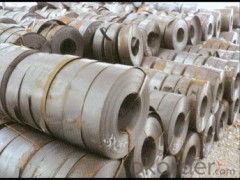
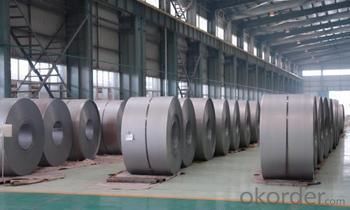
Specification Hot Rolled Steel Strip
JXC
1.25mm-6mm*10mm-600mm
AISI,ASTM,BS,DIN,GB,JIS
Q195,Q215,Q215B,Q235,Q235B
FAQ of Hot Rolled Steel Strip
We offer insurance for quality with low price
We can provide qualify goods,competitive price and speedy delivery
Seawory Export Package Inside:Moisture-proof paper Outside:Iron sheet Use Strip tie for 8 times .
- Q: How are steel strips used in the production of air conditioning systems?
- Steel strips are used in the production of air conditioning systems for various purposes, such as forming the structural components, creating the outer casing, and securing various internal components together.
- Q: Can steel strips be used in the production of wind turbine components?
- Yes, steel strips can be used in the production of wind turbine components. Steel strips are often utilized in the manufacturing of various wind turbine parts, such as towers, rotor blades, and nacelles, due to their strength, durability, and suitability for withstanding high stresses and loads.
- Q: How do steel strips perform in terms of creep resistance?
- Steel strips generally have good creep resistance due to their high strength and stiffness. The low carbon content in steel helps in minimizing the creep deformation at high temperatures and under prolonged stress. Additionally, the microstructure and composition of the steel can also be modified to enhance its creep resistance. Overall, steel strips are known for their favorable performance in terms of creep resistance.
- Q: What are the different surface defects found in steel strips?
- There are several different surface defects that can be found in steel strips. Some of the common defects include: 1. Scale: Scale is a form of oxide that forms on the surface of steel when it is exposed to high temperatures. It appears as a thin layer of flaky material and can affect the appearance and quality of the steel. 2. Roll marks: Roll marks are caused by irregularities on the rolls used to flatten the steel during the manufacturing process. They appear as raised or depressed areas on the surface of the steel and can affect its flatness and appearance. 3. Scratches: Scratches are caused by mechanical damage to the surface of the steel, such as during handling or transportation. They can vary in size and depth and can affect the appearance and integrity of the steel. 4. Pits: Pits are small depressions or cavities in the surface of the steel. They can be caused by various factors, including corrosion, handling damage, or manufacturing defects. Pits can affect the appearance and structural integrity of the steel. 5. Edge cracks: Edge cracks are cracks that occur along the edges of the steel strip. They can be caused by various factors, including improper handling, overloading, or manufacturing defects. Edge cracks can affect the strength and integrity of the steel. 6. Surface contamination: Surface contamination refers to the presence of foreign materials on the surface of the steel, such as oil, grease, dirt, or paint. Contamination can affect the surface quality and may also lead to corrosion or other forms of damage. It is important to detect and address these surface defects in steel strips to ensure the quality and performance of the steel. Various inspection and quality control measures, such as visual inspection, non-destructive testing, and surface treatment techniques, are employed to identify and rectify these defects before the steel is used in various applications.
- Q: How are steel strips used in the manufacturing of automotive components?
- Steel strips are a crucial component in the manufacturing of automotive parts due to their versatility and durability. These strips are used in various ways throughout the automotive manufacturing process. Firstly, steel strips are commonly used in the production of body panels and structural components. They are cut and shaped to form the framework and outer shell of the vehicle, providing strength and rigidity. Steel's high tensile strength makes it ideal for withstanding the forces and impacts experienced by automobiles. Additionally, steel strips are used in the fabrication of automotive springs, such as suspension and clutch springs. These strips are formed into the desired shape and then heat-treated to achieve the desired elasticity and resilience. The use of steel strips ensures that these critical components can handle the weight of the vehicle and provide a smooth and comfortable ride. Moreover, steel strips are utilized in the manufacturing of automotive fasteners, such as nuts, bolts, and clips. These strips are stamped or machined into the required shapes and sizes, providing strong and secure connections between various automotive components. The durability of steel ensures that these fasteners can withstand the vibrations and forces experienced during vehicle operation. Furthermore, steel strips are used in the production of automotive exhaust systems. These strips are rolled, bent, and welded to form the pipes and tubing required for the exhaust system. Steel's resistance to high temperatures and corrosion makes it an ideal material for this application. Overall, steel strips play a vital role in the manufacturing of automotive components, offering strength, durability, and versatility. Whether used in body panels, springs, fasteners, or exhaust systems, steel strips contribute to the overall performance, safety, and longevity of automobiles.
- Q: Are steel strips resistant to corrosion?
- Yes, steel strips are generally resistant to corrosion due to the protective oxide layer that forms on their surface, but their level of corrosion resistance can vary depending on the type of steel and the specific environmental conditions they are exposed to.
- Q: Are steel strips used in the manufacturing of household appliances?
- Yes, steel strips are commonly used in the manufacturing of household appliances. They provide strength, durability, and stability to the appliances.
- Q: Are steel strips suitable for architectural applications?
- Yes, steel strips are suitable for architectural applications. Steel strips offer numerous advantages that make them suitable for architectural applications. Firstly, steel is a strong and durable material that can withstand heavy loads and extreme weather conditions. This makes it ideal for use in architectural structures such as bridges, buildings, and roofs. Additionally, steel strips are versatile and can be easily customized to meet specific design requirements. They can be rolled, bent, and shaped into various forms, allowing architects to create unique and aesthetically pleasing structures. Steel strips also offer a wide range of finishes and coatings, making them suitable for both interior and exterior applications. Moreover, steel strips are highly resistant to corrosion, rust, and fire, ensuring long-term durability and safety. They also have a high strength-to-weight ratio, which means that they can provide structural support while being lightweight. Furthermore, steel is a sustainable material that can be recycled, reducing the environmental impact of architectural projects. It is also cost-effective, as it requires minimal maintenance and has a long lifespan. In conclusion, steel strips are indeed suitable for architectural applications due to their strength, durability, versatility, resistance to corrosion and fire, sustainability, and cost-effectiveness.
- Q: Are steel strips used in the production of furniture?
- Yes, steel strips are often used in the production of furniture. They can be used for reinforcement, support, or as decorative accents in various furniture pieces.
- Q: Can steel strips be used for fencing?
- Absolutely, fencing can utilize steel strips. Steel strips are widely employed in fencing applications because of their durability, strength, and capacity to endure harsh weather conditions. They offer a superior level of security and can be employed for different types of fencing, including chain-link fences, barbed wire fences, and even decorative fences. Steel strips are adaptable, straightforward to install, and demand minimal maintenance, rendering them a favored option for residential and commercial fencing ventures alike.
Send your message to us
Hot Rolled Steel Strip Electrical Appliance Bridge Pipeline Automobile
- Loading Port:
- China main port
- Payment Terms:
- TT OR LC
- Min Order Qty:
- 1000 m.t.
- Supply Capability:
- 10000 m.t./month
OKorder Service Pledge
OKorder Financial Service
Similar products
Hot products
Hot Searches
Related keywords
